A Guide to Adventure Photography
The hardest part about outdoor adventure photography is picking up your camera.
That’s not a joke. Conditions can be brutal. There will be many times when staying
dry, keeping your fingers from freezing, and protecting your equipment will seem
much more important than getting a shot.
Case in point: I was leading a late-season wilderness trip in the Brooks
Range of
northern Alaska. A light east wind had been blowing steadily for the past days.
In arctic Alaska, dry, fair weather tends to come from the east. A couple of miles
into the day’s trek, the breeze died.
Then, within moments, I felt a puff of air on my face…coming from the west.
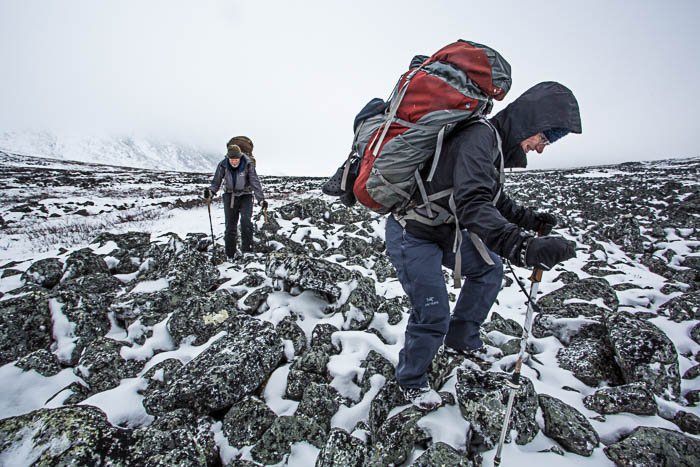
Within an hour clouds appeared on the western horizon. Knowing we were
about to be hammered by a fall storm, we found a sheltered spot to set up camp.
By early evening our tents were shuddering in a stiff breeze, which grew through
the night, threatening to rip our tent pegs from the ground or tear the nylon of the
rain flies. The temperature dropped, and
wet snow began to splat in heavy flakes.

When morning finally arrived, there were six inches of snow on the
ground,
fog obscured the mountain tops, and it was several degrees below freezing.
The last thing I wanted to do was make photos. But I got out my camera, went
for a walk with my clients, and did just that.
I ended up with some of my favorite images from that trip. I got those shots because,
as much as I would have preferred to sit in the kitchen tent and drink hot chocolate,
I made the effort to get up, go out and make some photos.
Go out and Shoot! That’s the biggest tip I can offer
about Adventure Photography.
But there is more to consider than that and this article will take you through it.
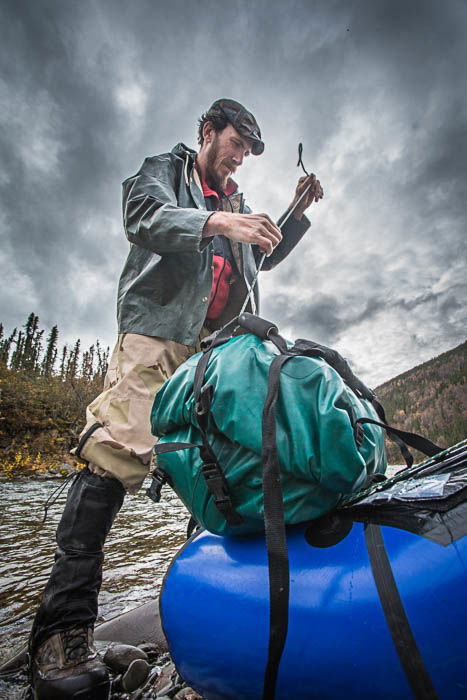
Cameras for Outdoor Adventure Photography
When I discuss photography, I try not to emphasize equipment. I am a
strong believer that your creativity, technique, and toughness are far
more important to your success as a photographer. That said, a few
tools, and a few considerations about your equipment, will greatly
increase your success when it comes to creating images in the harsh
conditions adventure photographers often encounter.
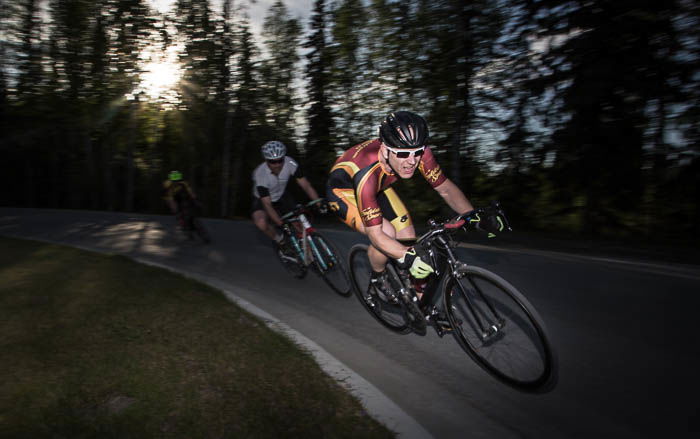
Weight
The best camera for adventure photography is one you can carry for
hours, with all your other photo gear, food, and camp equipment without
hurting yourself. Think light-weight. I’ve come to really like compact
mirrorless cameras, in particular those in the Panasonic Lumix series
such as the Panasonic GH5.
Small and lightweight cameras and lenses are a great asset, but standard
DSLRs are also more than suitable and have one large advantage over
many mirrorless, remarkable weather sealing.
Weather-Sealing and Durability
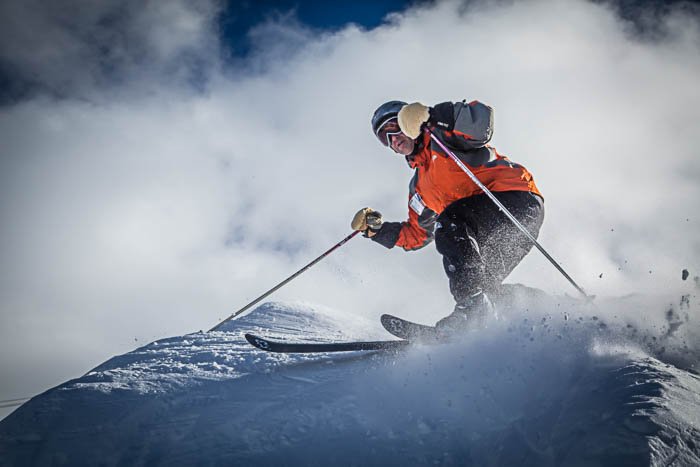
My professional grade Canon DSLRs and lenses have remarkable weather sealing. While of course I try to keep them dry,
these cameras can withstand a surprising amount of rain, snow, and
brutally cold conditions. Similar cameras by other manufacturers can do
the same.
Cameras used in outdoor and adventure photography have to put up with
all kinds of abuse. So, when shopping for new gear, be sure to consider
durability and water sealing.
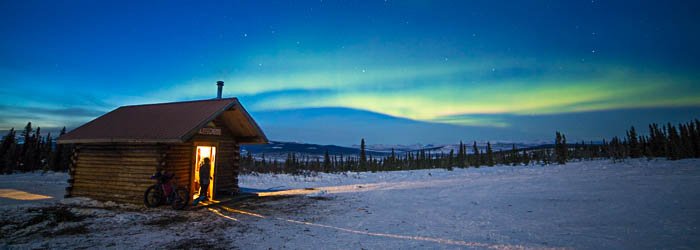
Lenses
Just like your camera body, you’ll want to consider the size of the
lens, its durability and weather sealing. For years I used my standard
Canon glass, and that is still a good option. High end lenses are almost
always suitably tough and weather resistant for adventure photography.
However, they do tend to be heavy. I gave up carrying my 70-200 f2.8 and
other bigger lenses a few years back, opting for less, but easier to
handle gear.
I recommend, at a minimum, that you have a wide angle, and a normal-to short telephoto length lens in your kit.
Tripod
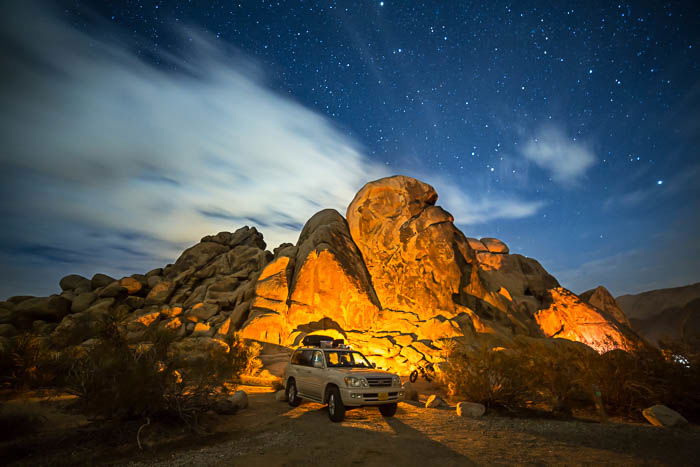
Though useful on occasion, the often fast-moving pace of adventure sports, and the weight restrictions of wilderness travel, will usually make their use difficult. When I’m integrating landscape photography, and weight is not a driving issue, I’ll often throw one in, but more often than not, it stays at home.
Sample Kits
Keep in mind these are my selections, your preference may differ.
[Note: ExpertPhotography is supported by readers. Product links on
ExpertPhotography are referral links. If you use one of these and buy
something, we make a little bit of money. Need more info? See how it all works here. — Ed.]
Ultralight
- Compact 4/3 camera (Lumix GX85)
- 12-24mm lens
- 50-150mm lens
Light
- Primary camera Lumix G9
- Backup Camera Lumix GX85
- 12-24mm
- 45-100mm f2.8
Medium
- Primary camera Lumix G9
- Backup Camera Lumix GX85
- 12-24mm
- 45-100mm f2.8
- 200mm f2.8
- Tripod
Heavy
- Full frame DSLR
- 70-200 f2.8
- 24-105 f4
- 17-40 f4
- Lumix G9
- 12-24mm
- 45-100mm f2.8
- 200mm f2.8
- Tripod
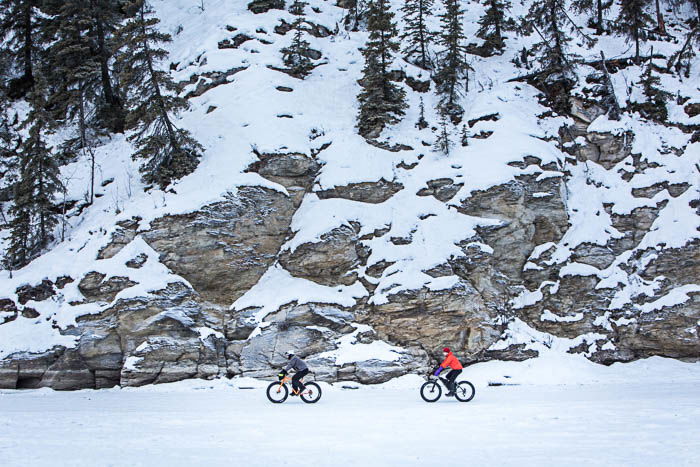
Last Thoughts on Gear
Adventure photographers often have to move fast. We have to be able
to get ahead of our models, make images, then scurry off to get ahead
again. A light, simple kit will help immensely with that.
Finally, know your gear inside and out. The more time you spend fumbling
with camera settings, the less time you’ll be shooting. You’ll increase
your chances of missing a shot.
In other words, go light, and know your kit.
Environment
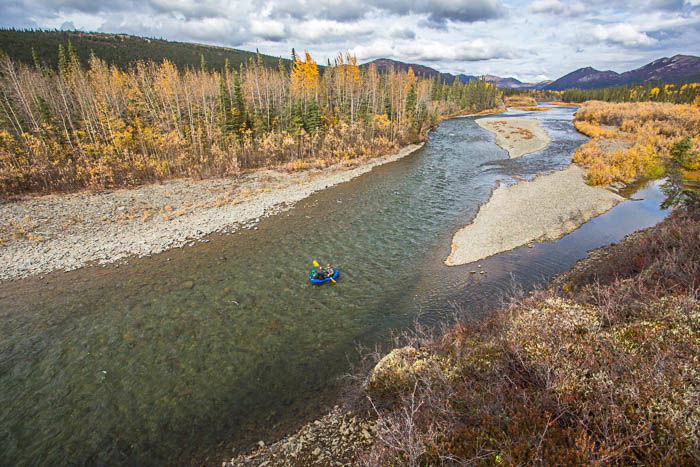
If you are interested in outdoor adventure photography, there is a
pretty good chance you enjoy the outdoors. When out photographing, be
mindful of the impact your activities have on the environment. Stay on
designated trails, don’t harass wildlife, and don’t ask your models to
do any of those things.
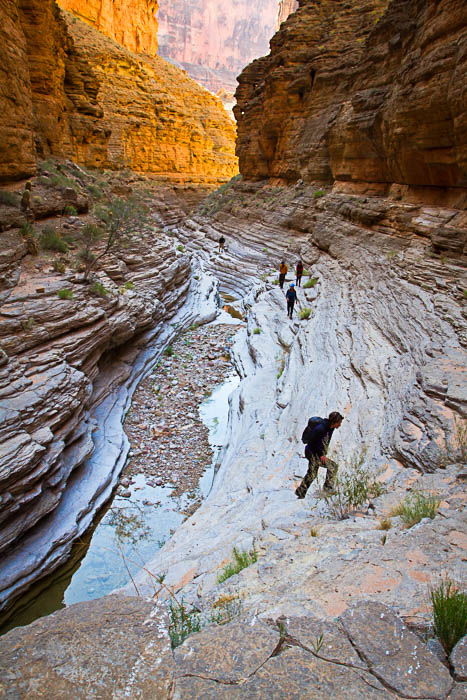
As photography becomes increasingly popular, there are more and more
conflicts between users. Your camera does not buy you the right to break
rules. Be respectful, or eventually photographers are going to face
regulations that will impede our ability to shoot in our favourite
places.
I’ve met some photographers who think the rules don’t apply to them
because they are carrying a few thousand dollars in equipment. Please,
don’t be one of those guys.
Techniques
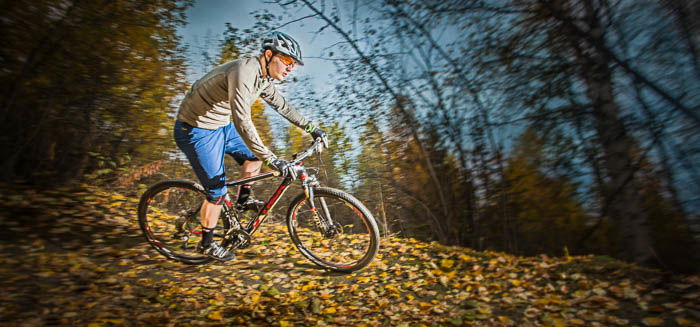
I’m not an outdoor adventure photographer who specializes in making
images while clinging to a cliff side, or while hanging from ice tools
on a frozen waterfall. My work is quieter. I like images of people in
the wild. I like stories of humans involved with the landscape, and the
way the land can overwhelm the human experience.
Because I like these quieter images, the techniques I apply are more
about telling stories than the dramatic life of high elevation climbers.
These are applicable to any school of adventure photography.
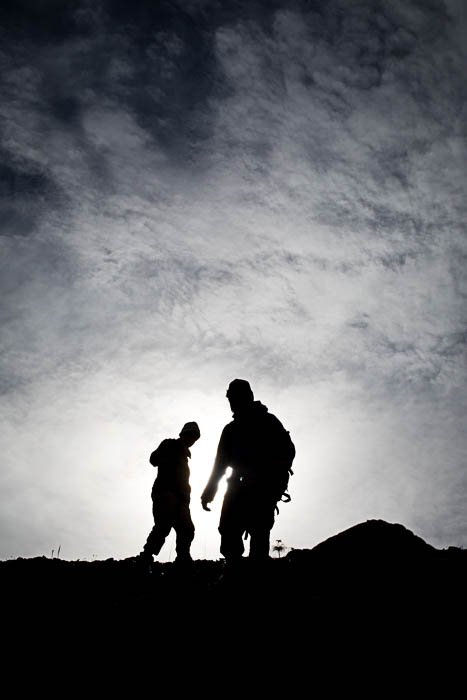
Think About the Why
Why are you making that image? Why is your subject doing what they are doing? Consider both your own and your subject’s motivation. The answer to those questions should be the heart of your image or series.
Don’t Limit Yourself to a Single Image
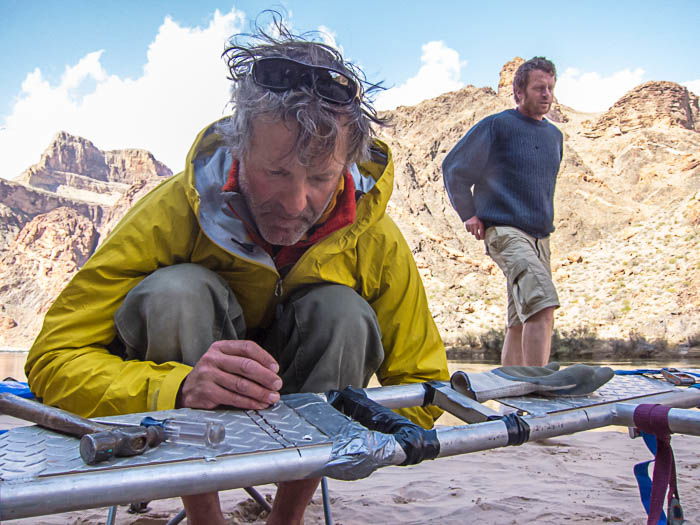
Most good photo stories take some time to build. And that means they
also use more than one image. I’m not talking about a blow by blow of a
hiker on a ridge or every move of a climber on a cliff. Rather, the
adventure photographer needs to account for all the aspects of the
story, even the parts that don’t seem particularly exciting at the time.
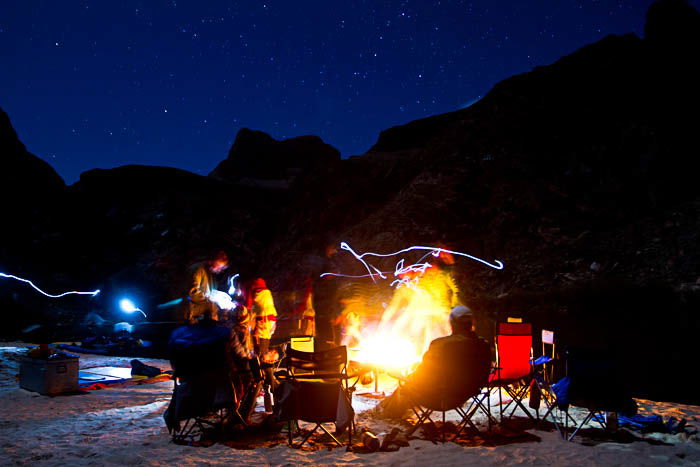
Make images of the preparation, the equipment, camp life, gear
maintenance and the like. These images fill the gaps in the story, and
make it whole.
The Place
Location is a huge part of outdoor adventure photography. In fact,
I’d argue it is the most important part of the story. Fortunately, these
places are also often naturally photogenic.
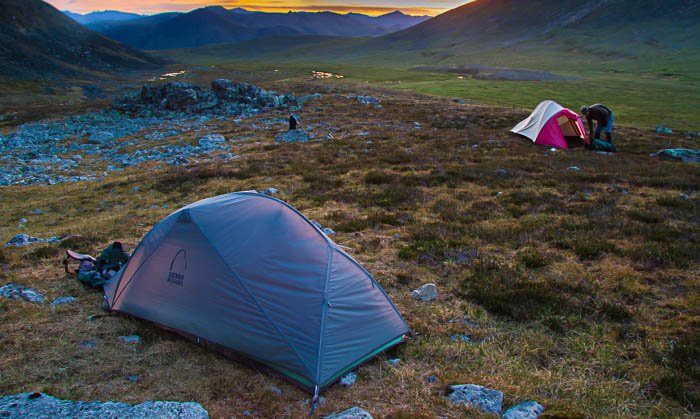
Some of my favorite wilderness photos are those that show humans in the
landscape, dwarfed by mountains, or storms, or wave-tossed oceans. These
images remind your viewer of the scale, and they put humans in their
place: at the mercy of the landscape.
To create these types of images, compose your shot as though you were
making a landscape photograph, but incorporate the human element in a
noticeable, though not prominent location. With or without the person,
the image should work.
Perspective
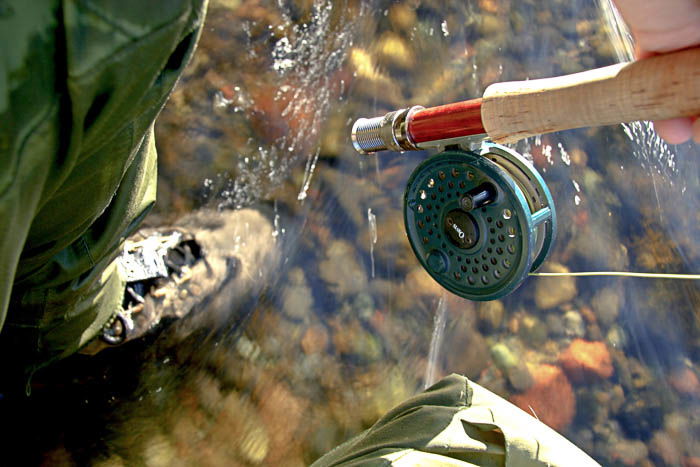
Compositional strategies are so varied that they extend far beyond the scope of this article. However, I do want to emphasize the importance of variety.
Get low and lay on the ground for an upward looking perspective.
Scramble atop a nearby rock outcropping and get an image looking down on
your subject. Zoom in tight, show the details, and then back up to show
the surrounding landscape.
In short, don’t limit yourself.
As I noted in the section on gear, the adventure photographer has to
cover twice the distance at twice the speed of the people they are
photographing. I can’t tell you the number of times, I have run along a
mountain ridge to get ahead of a group of hikers, stopped, photographed
them as they passed, and then ran again to get back in front.
All of this physical effort is in the interest of showing my subjects in
many different locations, from different perspectives, and in different
moments in the action.
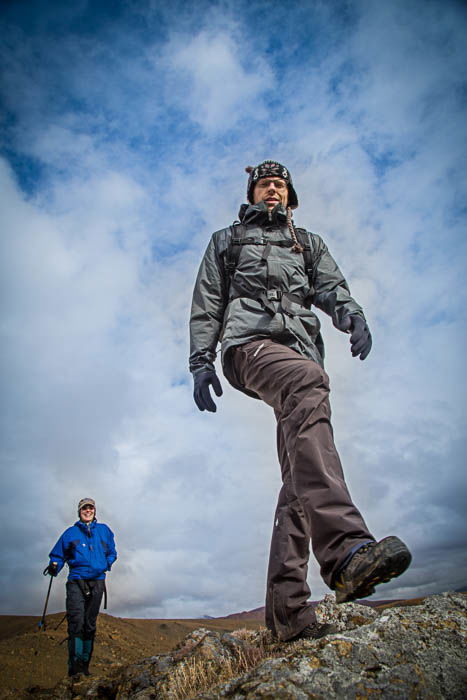
Variety, after all, is the spice of both life and photography.
To be an adventure photographer, you have to be willing to have
adventures. That should go without saying, but you’d be surprised at how
many people who want to make these images, have never backpacked,
climbed, or rafted a river in their lives. You’ve got to be willing to
suffer and work, and spend days in horrible weather.

In exchange for your time and effort, you’ll not only make images of
dramatic scenes, and awesome people, you’ll also experience those things
for yourself. And when you experience the story you are telling for
yourself, you’ll have an easier time telling it.
Above all, go do something exciting, and take that camera with you!
--------------------------------------------------------------------------------------------------
Free Photography Ebook
Symmetry is defined in the dictionary as ‘the quality of having parts that match each other, especially in an attractive way, or a similarity of shape or contents’.
By its very description, it’s obvious that symmetry can be used to produce beautiful images.
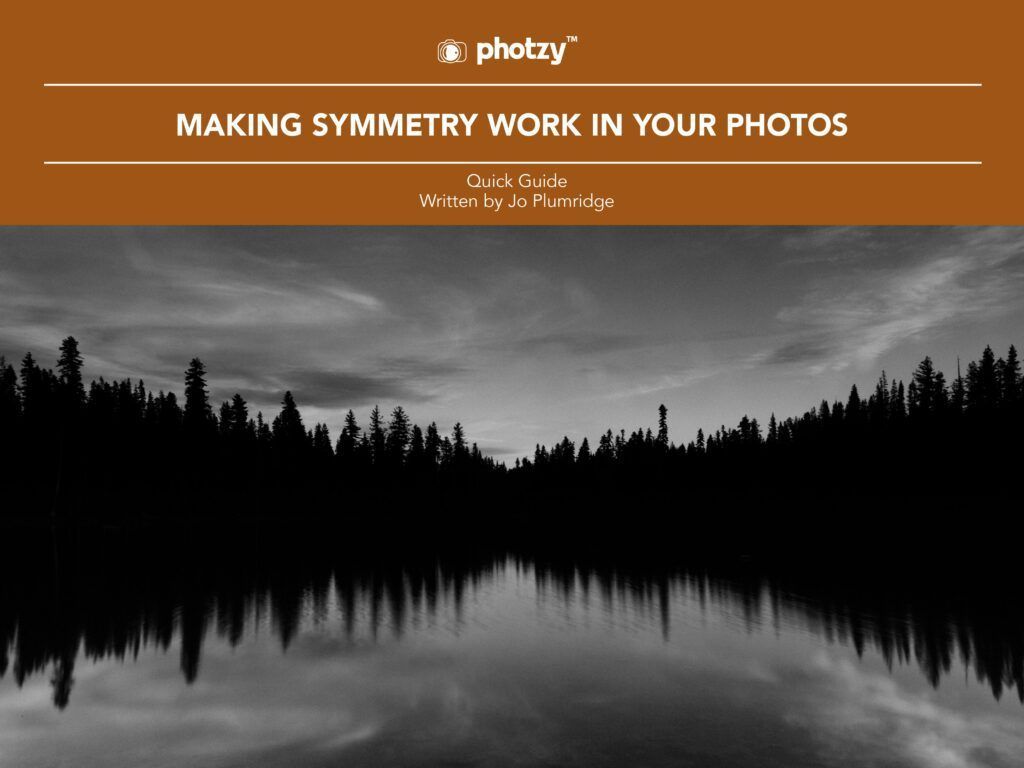
No comments:
Post a Comment
Note: Only a member of this blog may post a comment.